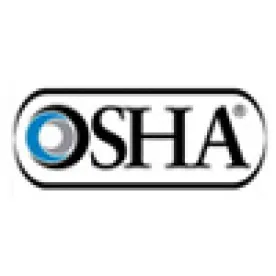As we noted in our April 14, 2020, Alert, since the beginning of the Coronavirus Disease 2019 (COVID-19) pandemic, employers have continued to wrestle with whether to record employee COVID-19 cases on their Occupational Safety and Health Act (the Act) Injury and Illness logs, called Forms 300, 300A, and 301. As states around the country start to ease restrictions and businesses re-open (albeit with varying restrictions) – this issue may continue to vex employers.
Prior enforcement guidance issued April 10, 2020, explained OSHA would not enforce the requirement that employers (except those in certain industries including health care, emergency response, and correctional institutions) make work-relatedness determinations regarding employees who contract COVID-19 for purposes of recording injury and illnesses except where:
- There was objective evidence that a COVID-19 case may be work-related. Such objective evidence could be a number of cases developing among workers who work closely together without an alternative explanation; and
- The evidence was reasonably available to the employer. The memorandum explained that reasonable available evidence includes information given to the employer by employees or information that the employer learns regarding employee health and safety during the ordinary course of managing its business and employees.
On May 19, 2020, OSHA issued another enforcement guidance memorandum regarding recording COVID-19 cases that rescinds the prior guidance and obligates employers to make at least some work-related determinations regarding employees who contract COVID-19. The new memorandum goes into effect May 26, 2020, and will remain in effect until further notice.
By way of background, OSHA has explained that a COVID-19 case is a recordable illness if (1) an employee is positive or presumptively positive for COVID-19; (2) the case is work-related; and (3) the case results in medical treatment beyond first aid or days away from work. For employers, the “million-dollar” question remains: How does an employer determine whether an employee’s COVID-19 case is work-related such that it is recordable on the employer’s Injury and Illness logs?
OSHA’s May 19 memorandum seeks to help employers address this question.
To start, OSHA will exercise its enforcement discretion to assess employers’ efforts in making work-related determinations. This means that employers, at a minimum, must undertake an investigation to determine whether the COVID-19 case is work-related.
To this end, when an employer learns of an employee’s COVID-19 illness, the employer should, at a minimum:
- Ask the employee how he believes he contracted the COVID-19 illness;
- While respecting employee privacy, discuss with the employee his work and out-of-work activities that may have led to the COVID-19 illness; and
- Review the employee’s work environment for potential COVID-19 exposure.
The employer should base its work-related determination should be based on the information reasonably available it at the time; however, if the employer later learns more information related to an employee’s COVID-19 illness, the employer should then take that information into account and revisit whether the illness is work-related.
The memorandum explains that after a reasonable and good faith inquiry, if the employer cannot determine whether it is more likely than not that exposure in the workplace played a causal role with respect to a particular case of COVID-19, the employer does not need to record that COVID-19 illness.
The memorandum instructs Compliance Officers to consider the questions below when determining whether an employer has complied with its recording obligation. That is, evidence and information regarding answers to these questions may weigh in favor of or against work-relatedness.
- Whether several cases of COVID-19 developed among workers who work closely together and there is no alternative explanation.
- Whether the employee’s COVID-19 illness was contracted shortly after lengthy, close exposure to a particular customer or co-worker.
- The employee’s COVID-19 illness is likely work-related if the employee’s job duties include frequent, close exposure to the general public in a locality with ongoing community transmission and there is no alternative explanation.
- An employee’s COVID-19 illness is likely not work related if he or she (1) is the only worker to contract COVID-19 in his or her vicinity and her job duties do not include frequent contact with the general public; and (2) frequently associates with someone outside of the workplace who has COVID-19, is not a coworker, and exposes the employee during a period in which the individual is likely infectious.
The upshot of the new memorandum is that employers cannot not just assume that an employee’s COVID-19 illness is not work related. Rather, employers must undertake a good faith investigation regarding whether the workplace played a causal role in the employee’s COVID-19 illness.
Employers should be aware that making a work relatedness determination is important because employers who over-record instances of employee work-related COVID-19 illnesses may find themselves in OSHA’s Site-Specific Targeting Program, which may lead to an OSHA inspection down the road. Likewise, employers who under-record instances of work-related COVID-19 illnesses may be exposed to multiple citations for each COVID-19 illness that was not recorded. Employers should consult with experienced counsel on reporting.





 />i
/>i

